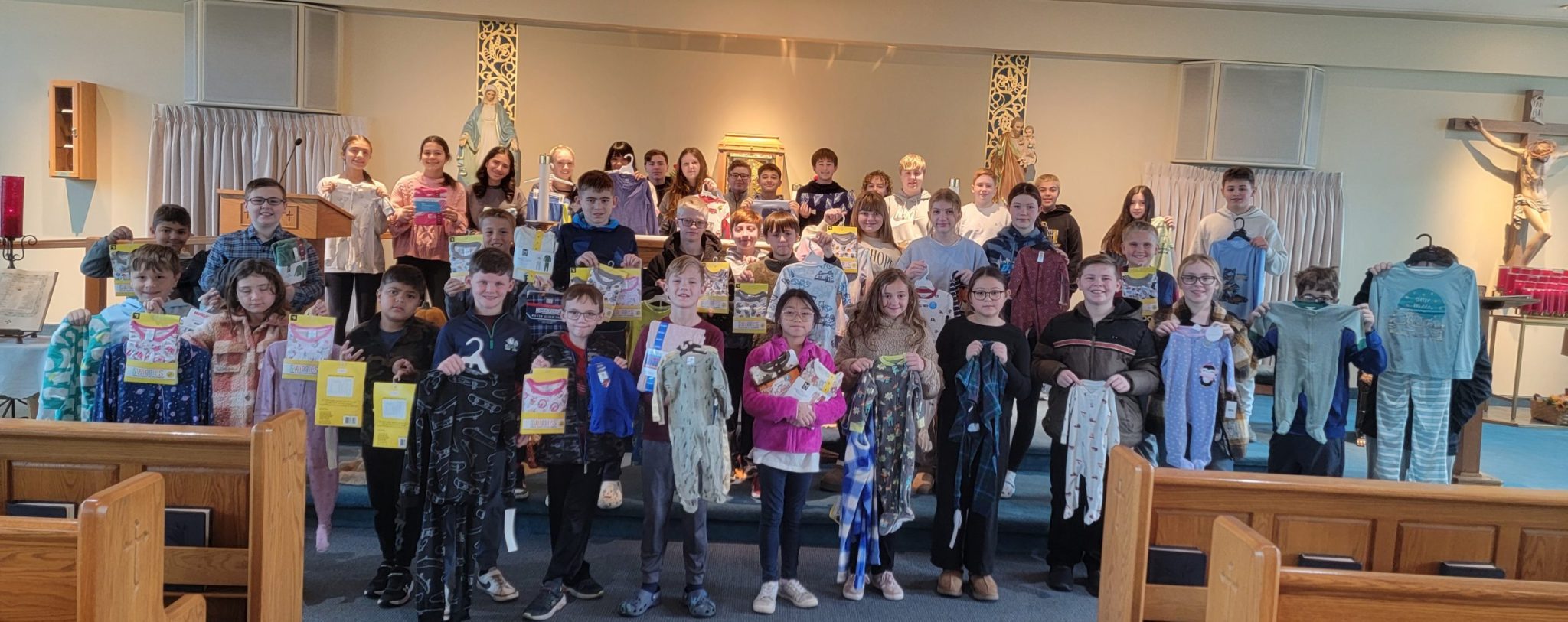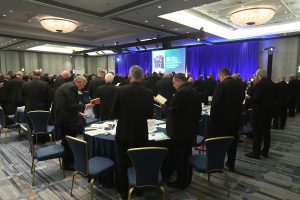(OSV News) – Before joining other pro-life advocates at the March for Life in Washington, Shannon Allen spent an evening with thousands of other teens. Inside a darkened arena, the crowd around her clapped to the upbeat music, cheered for the speakers and knelt in silence as a Eucharistic procession wound its way through the stadium.
But what Allen remembers most from the pro-life rally was the feeling of not being alone.

“The biggest thing for me was just being with so many Catholics my age,” said Allen, a college student from Northern Virginia who has twice attended Life is VERY Good, a pro-life event for youth. “Oftentimes it feels like we’re a minority, so being able to be surrounded by thousands of people who are all for life the same way you are is comforting.”
Pro-life organizers are hoping to augment that sense of togetherness with the merger of two pre-march youth events, announced Nov. 14. The Diocese of Arlington, Virginia, and host of Life is VERY Good since 2009, and the Knights of Columbus and the Sisters of Life, co-hosts of Life Fest since 2022, are joining forces to create one big pro-life rally called Life Fest ahead of the 2025 March for Life Jan. 24.
“This event will inspire a new generation and help them see that life at all stages is precious,” said Supreme Knight Patrick Kelly in a statement announcing the merger. “Love is the answer; it transforms lives and changes hearts and minds, and that’s what Life Fest is all about. Together, we pray for a world in which abortion is unthinkable.”
The two-day pro-life event will be held Jan. 23-24 at EagleBank Arena on the campus of George Mason University in Fairfax, Virginia, 20 miles southwest of the National Mall and the March for Life. The EagleBank Arena has previously hosted Life is VERY Good, while Life Fest was held at the DC Armory in Washington.
Life Fest 2025 will begin with a night of praise, held the evening before the March for Life with speakers, live music and Eucharistic adoration. The following day, a morning rally and Mass will be held hours before the March for Life. Attendees will have the chance to go to confession and to venerate the relics of St. John Paul II, Blessed Carlo Acutis, the recently beatified Ulma family and Blessed Michael McGivney, founder of the Knights of Columbus.
Organizers hope to attract some 8,400 participants to the event each day. A two-day ticket is $20.
“The Diocese of Arlington is excited to continue our long history of hosting groups from across the country and providing these participants with a peaceful time of prayer in preparation for the March for Life,” said Arlington Bishop Michael F. Burbidge, chairman of the U.S. Conference of Catholic Bishops’ Committee on Pro-Life Activities, in the Nov. 14 announcement. “We are especially excited that this year we will be working alongside the Sisters of Life and the Knights of Columbus through this single ministry experience.”
Sister Marie Veritas, a Sister of Life and the community’s director of evangelization in Denver, said Life Fest affirms the dignity of every human being.
“We’re living in a time where the goodness of the human person is questioned,” she said in the Nov. 14 statement. “Every human heart needs to know: I am good; I am important; I am irreplaceable. Every woman who is pregnant needs to know that she is not alone. Every woman who has experienced one or more abortions needs to know that Jesus sees her, loves her and longs to forgive and heal her.”
During the pandemic, the Arlington Diocese’s Life is VERY Good event was considerably scaled down, said Kevin Bohli, the diocese’s executive director of the Office of Youth, Campus and Young Adult Ministries.
Then, after the U.S. Supreme Court overturned the Roe v. Wade decision in 2022, many pro-life youth groups decided to forgo their annual trip to the national march and the Life is VERY Good event, likely to attend state marches instead, he said.
“We’re continuing to rise back out of those years,” Bohli told OSV News. “I think our numbers are going to increase because some of the groups are realizing there’s something very good for young people about making this trip to D.C. and seeing tens of thousands of young people very excited about being pro-life.”
Organizers also believe combining the two pro-life rallies into a larger one will pack a more powerful punch. “Together, we are stronger,” said Sister Marie Veritas in the statement. “Together, we can witness more powerfully to a broken world: Life is possible! Love is possible!”
Speakers and musicians for the upcoming Life Fest are yet to be announced. Past Life is VERY Good guests have included musician Matt Maher, The Catholic Channel’s Katie McGrady and “Real Life Catholic” host Chris Stefanick. Past Life Fest guests have included Cardinal Seán P. O’Malley, now-retired archbishop of Boston, Sister of Life Bethany Madonna and musician Sarah Kroger.
Michael Albrigo, a student at Virginia Tech in Blacksburg, Virginia, and past attendee of Life is VERY Good, encouraged teens to attend Life Fest.
“It’s a good time – everyone there is excited to be there, the seminarians, the speakers, the sisters — and it’s important to take time out of our busy lives and dedicate that to things which we know and believe to be important,” he told OSV News.
Other Catholic pre-March for Life events include the National Prayer Vigil for Life at the Basilica of the National Shrine of the Immaculate Conception in Washington, which features evening Mass, adoration and Mass on the morning of the march.










